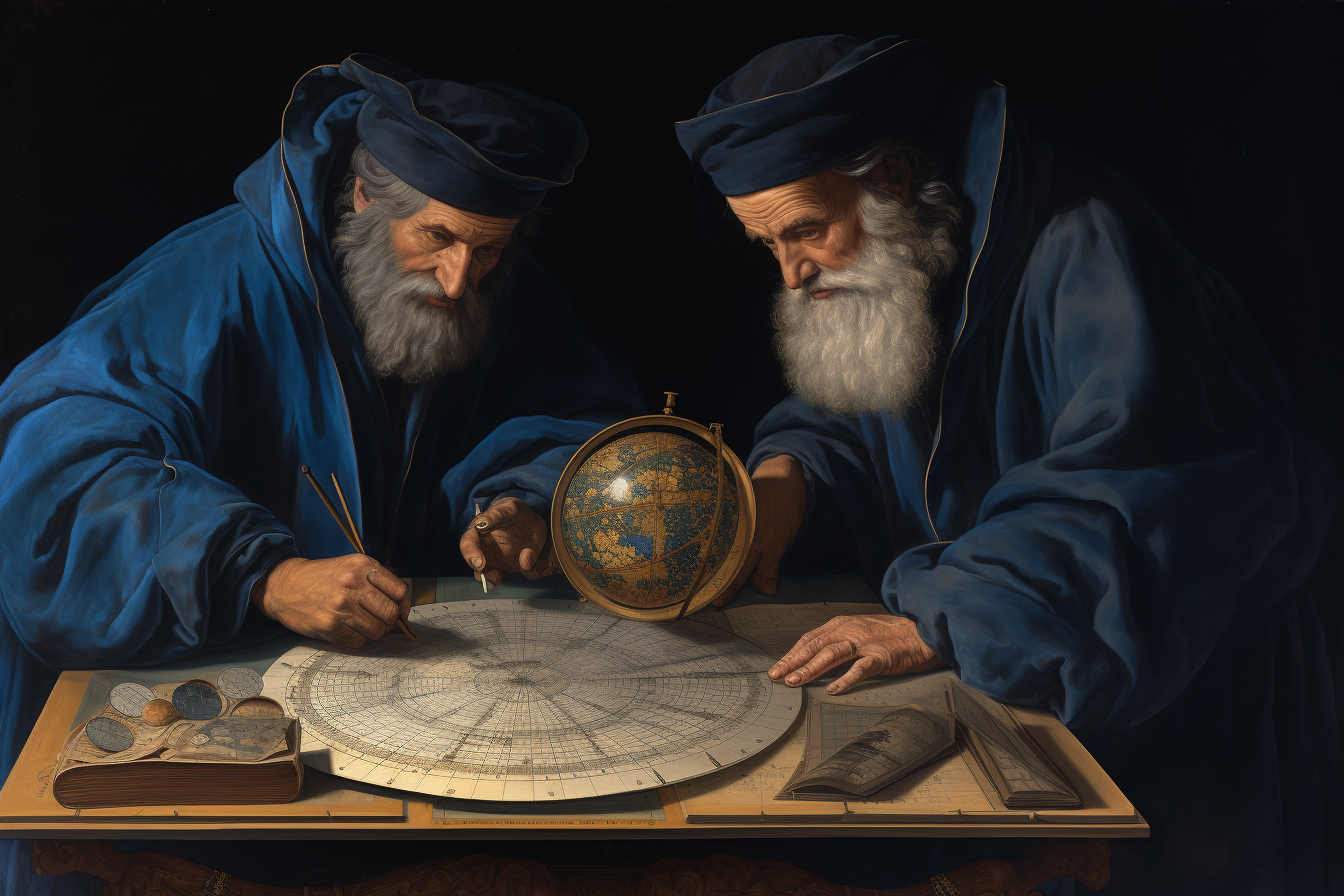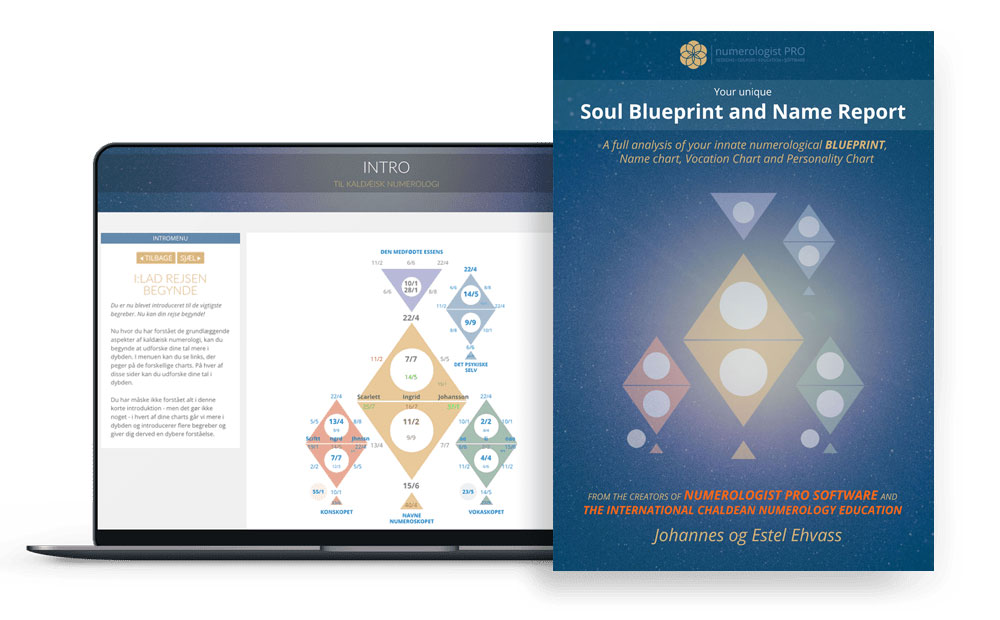Renaissance Astrological Practices: Evolutions and Innovations

Estel Ehvass
Welcome, dear reader! The Renaissance marked a pivotal time for many disciplines, and astrology was no exception. As society rekindled its passion for the arts and sciences, so too did it revisit the stars. This era, renowned for its rebirth of knowledge, saw astrology intertwine with emerging scientific studies and the broader awakening of human curiosity. The cosmos, during this period, served not just as a guide for destinies, but also as a testament to humanity's relentless pursuit of understanding. Dive with me into this intriguing era, where stars and society found renewed harmony.
New Techniques and Methods in Chart Interpretation
Introduction

The Renaissance, known for its flourishing of arts and sciences, also witnessed significant advancements in astrological practices. As scholars revisited ancient texts, they infused traditional astrological techniques with innovative methods. This period saw a fervent refinement of chart interpretation methodologies, marking a shift from mere destiny reading to nuanced, individual-centric analyses.
The Revival of Classical Techniques
Reconnection with Ancient Masters
The re-emergence of classical texts, especially from Hellenistic astrologers like Claudius Ptolemy and Vettius Valens, redefined the practice of chart interpretation. Scholars and astrologers delved deep into these texts, reviving forgotten techniques and breathing new life into traditional practices.
Improved House Division Methods
The Renaissance era witnessed debates and refinements over house division methods. While the Whole Sign and Equal House methods persisted, the Placidus and Regiomontanus systems gained popularity, allowing astrologers to craft more precise birth charts.
The Role of Planetary Dignities and Debilities
Essential Dignities
Astrologers of the Renaissance gave renewed emphasis to essential dignities – the strengths or weaknesses of a planet based on its position. Understanding a planet’s rulership, exaltation, triplicity, term, and face became crucial in evaluating its influence in a horoscope.
Accidental Dignities and Debilities
Beyond the essential dignities, the Renaissance astrologer also took into account the accidental dignities and debilities. Factors like planetary speed, direction, latitude, and aspects with other celestial bodies became vital in chart interpretation.
The Art of Synthesis in Chart Reading
Interplay of Planetary Aspects
Instead of viewing planets in isolation, Renaissance astrologers began to appreciate the complex interplay of planetary aspects. The trine, square, sextile, opposition, and conjunction were not merely geometric angles but symbolic relationships narrating an individual’s life story.
Combining Significations
Chart interpretation moved from linear analysis to a more layered approach. Houses, signs, and planets were viewed in combination, allowing for a richer, multidimensional understanding of an individual’s potential and challenges.
The Emergence of Predictive Techniques
Profections and Solar Returns
The Renaissance marked the popularization of profections—a technique where each year of a person’s life corresponds to a house of their birth chart. Coupled with solar returns, which focus on the Sun’s return to its natal position, astrologers could offer detailed yearly forecasts.
Primary Directions and Progressions
Astrologers became adept at using primary directions, a method of moving planetary positions to predict significant life events. Simultaneously, secondary progressions, which equated a day after birth to a year in life, gained traction.
The Relevance of Fixed Stars
Stellar Influences on the Natal Chart
While planets remained central to astrological analyses, the significance of fixed stars became increasingly evident. Stars like Regulus, Spica, and Algol were mapped onto the natal chart, and their mythological and astronomical attributes were used to refine predictions.
Parans and Rising Stars
The Renaissance astrologer also considered parans—moments when a star and a planet simultaneously touch the angles of a chart. This added depth and nuance to interpretations, enhancing the richness of the astrological narrative.
Conclusion
The Renaissance era was transformative for the realm of astrological chart interpretation. The revival of classical methodologies, combined with innovative techniques, made horoscopes more personalized than ever before. This period didn’t just modernize astrology; it elevated it into an intricate art form interwoven with precise science, mirroring the Renaissance spirit of bridging the past with the future.
The Rise of Elective and Horary Astrology
Introduction: The Specialized Branches of Astrology
Astrological practices during the Renaissance were not just limited to natal astrology, which centers on interpreting an individual’s birth chart. The period also saw the rise and refinement of elective and horary astrology, which focused on choosing the most auspicious moment for an action and answering specific questions, respectively.
Elective Astrology: Picking the Perfect Moment
Foundations of Elective Astrology
Elective astrology is the art of choosing the best time to undertake a particular action. Be it starting a business, getting married, or setting out on a journey, the Renaissance individual turned to astrology to ensure the stars were aligned in their favor.
Interplay of Planets and Houses
Electing a time was no simple task. Astrologers would consider the placement of planets in various houses and their aspects to one another. The Moon, being the swiftest moving celestial body, played a crucial role in these calculations.
Rules and Guidelines
There were established rules for different endeavors. For instance, Venus, the planet of love, needed to be well-aspected for marriages, while Mercury, governing commerce and communication, was critical for business ventures.
Horary Astrology: Seeking Answers from the Heavens
The Query and the Chart
Horary astrology is based on the belief that the universe, at a specific moment, holds the answer to a question an individual might pose. When a question was asked, an astrologer would cast a chart for that precise moment and location.
The Role of the Ascendant
The Ascendant or the rising sign and its ruling planet were of utmost importance in horary readings, representing the querent. The nature, placement, and aspects of the ruling planet provided insights into the person’s situation and state of mind.
Deciphering Answers
The house related to the nature of the question was analyzed in detail. For instance, questions about love were linked to the 7th house (house of partnerships), while queries about lost items were associated with the 2nd house (house of possessions).
Considerations Before Judgment
Not every horary question was deemed answerable. Certain chart conditions, such as the early degrees of the Ascendant or Saturn in the 7th house, were seen as inhibitory or cautionary, suggesting the question might not have a clear answer or was not yet ripe for judgment.
Factors Influencing Elective and Horary Practices
The Emphasis on Precision
Given the specific nature of these astrological branches, precision was paramount. The accuracy of birth charts was essential, and any error could lead to misjudgments.
The Revival of Ancient Texts
The rediscovery of classical astrological texts, like William Lilly’s “Christian Astrology,” provided valuable guidelines for both elective and horary practices. These texts not only revived traditional techniques but also introduced innovative methods.
Ethical Considerations
With the increasing demand for elective and horary services, ethical concerns emerged. Was it right to attempt to align with or manipulate the heavens’ will? Such debates became common, reflecting the deeper philosophical and moral discussions of the era.
Conclusion: The Elegance of Time and Question in Astrology
The Renaissance era brought to the fore the intricacies of elective and horary astrology. These specialized branches were not just about prediction but were deeply intertwined with the dance of fate and free will. As individuals sought to align their actions with the cosmos or seek answers from it, astrology served as a bridge, reflecting the Renaissance’s broader spirit of inquiry, discovery, and alignment with the universe’s grand tapestry.
The Mundane and the Medical: Astrology’s Expanding Domains
Introduction: Broadening the Horizons of Astrological Influence
During the Renaissance, astrology saw an expansion into multiple facets of daily life. Beyond the personal and prophetic, astrology began to play a pivotal role in both mundane events and the medical realm. The belief that the celestial bodies’ configurations could affect entire nations and their fate, as well as the health and wellbeing of individuals, gained traction during this period.
Mundane Astrology: Predicting the Fate of Nations
Foundations of Mundane Astrology
Mundane astrology, also known as world astrology, is concerned with the fate of nations, kings, and cities. It interprets celestial cycles and their potential effects on countries, predicting everything from wars and famines to periods of peace and prosperity.
The Role of Great Conjunctions
Of particular significance in mundane astrology were the ‘Great Conjunctions’—the meetings of Jupiter and Saturn. These were believed to herald major societal shifts, and their occurrences were meticulously charted.
Nations Under Signs
Different countries and cities were believed to be under the influence of specific zodiac signs. For instance, Leo was often associated with France, while Scorpio was linked with Italy. This made it possible to draft horoscopes for entire nations based on planetary movements through these signs.
Astrological Medicine: Celestial Diagnostics and Healing
The Humoral Theory and Astrology
Renaissance medicine was largely based on the humoral theory, which posited that the body had four humors: blood, phlegm, yellow bile, and black bile. Each humor was associated with a particular element and planet. Illness was believed to arise from an imbalance of these humors, and astrology was employed to determine the cause and remedy.
Decumbiture Charts
When a person fell ill, the exact time they took to bed—the moment of ‘decumbiture’—was noted. An astrological chart was then cast for this time, and the positions of the planets and signs were analyzed to discern the nature of the illness and its cure.
Zodiac Man
The ‘Zodiac Man’ was a common illustration in medical-astrological texts. It depicted a human figure with zodiac signs corresponding to different body parts, illustrating how each sign ruled over specific areas of the body. For instance, Aries was associated with the head, while Pisces was linked to the feet.
Medical Elections: Choosing Times for Treatment
Elective astrology found its place in medicine, too. Just as one could elect auspicious times for various activities, astrologers were consulted to determine the best times for bloodletting, surgeries, or starting a particular treatment.
The Challenges and Acceptance of Medical Astrology
Critics and Skeptics
While many in the medical profession embraced astrological techniques, they were not without detractors. Some physicians believed relying on the stars was superstitious, preferring to trust observable symptoms and established medical knowledge.
Integration in Medical Education
Despite the criticisms, the integration of astrology in medicine was so pronounced that many medical schools included astrology in their curricula. Students were taught how planetary movements could influence health and were trained to cast and interpret medical horoscopes.
Conclusion: The Celestial Imprint on Society and Health
The Renaissance era, with its blend of art, science, and mysticism, witnessed the deep entrenchment of astrology in both societal matters and individual health. Mundane astrology attempted to discern the destiny of nations, while medical astrology sought to heal individuals in alignment with the heavens. These practices, reflective of the period’s holistic worldview, underscore the Renaissance’s enduring fascination with the intricate dance between the terrestrial and the celestial.

Johannes & Estel: Renowned authorities in Numerology, Astrology, and the esoteric arts. As the founders of Scandinavia's premier Numerology school, we're delighted to share our insights through this curated series on astrology. Dive in and discover the stars.
The Worlds Most Advanced Numerology Report

Your birthdate reveals your unique life purpose, potentials, talents, weaknesses, and karma in this life.
Your names show what you attract into your life regarding your career, relationships, happiness, money, and success.
GET THE REPORT HERE
Introduction to Astrology
The history of Astrology
Moving beyond deterministic astrology
Foundation of Astrology: Planets, Signs and Houses
Astrology and the Holographic Universe
The Holographic Universe
The Human Psyche as a Mirror to The Solar System
The Human Body as a Mirror to The Star Signs
Astrology Background
Egyptian Astrology
Mayan Astrology
Chinese Astrology
Indian Astrology - Jyotish
Celtic Astrology
Tibetan Astrology
Mesopotamian Astrology
Early Mesopotamian Astrology: The Dawn of Celestial Divination
Enuma Anu Enlil: The Epicenter of Babylonian Celestial Omen Interpretation
Babylonian and Chaldean Astrology
Babylonian and Chaldean Astrology
Chaldean influence and evolution
Chaldean Wisdom: Safeguarding and Transmitting Astrological Knowledge
Hellenistic Astrology
Hellenistic Astrology background
Claudius Ptolemy and Tetrabiblos
Vettius Valens
Dorotheus of Sidon
Persian Astrology
Persian Astrology background
Sassanian Astrology
Late Antiquity and The Transition Period
Late Antiquity and The Transition Period
Hellenistic to Islamic Transition: The Torchbearers of Astrological Wisdom
Islamic Golden Age
Arabian Astrology Background
Arabian Astrology Contributions
Medieval Astrology
Introduction: The Medieval Cosmos
Monastic Preservers: Astrological Knowledge in the Dark Ages
Astrology in Medieval Medicine
Kings, Queens, and Constellations: Astrology in the Medieval Court
The Church and the Stars: A Contentious Relationship
Universities and Scholastic Pursuits: Academic Astrology
Astronomy & Astrology: Tools of the Trade
Medieval Astrological Houses and the Synthesis of Traditions
Transition to the Renaissance: Humanism and the Celestial Arts
Reflections: Medieval Astrology's Echoes in Modern Practice
Astrological Art of the Middle Ages
Famous Medieval Astrologers
Medieval Astrological Texts
Renaissance Astrology
Renaissance Humanism and Astrology
Scientific Advancements and Astrology
The Social Fabric: Astrology in Everyday Renaissance Life
Court Astrologers of the Renaissance
Controversies and Conflicts: Astrology Under Scrutiny
Renaissance Texts and Authors: Continuation of a Tradition
Astrology and Art: Celestial Imagery in the Renaissance
Renaissance Astrological Practices: Evolutions and Innovations
End of the Renaissance: The Gradual Decline of Astrological Influence
Renaissance Astrology's Echo in the Modern World
Enlightenment Astrology
Introduction: The Enlightenment and Astrology
Challenging the Stars: Astrology's Critics during the Enlightenment
Astrology and the New World
Astrology in the 19th Century
The Dawn of Psychological Astrology
Astrology in the 20th Century: A Modern Renaissance
Astrological Associations and Schools
Modern Controversies and Astrology
Astrology and Popular Culture
Astrology and Technology
Current Trends and Future Directions in Astrology
Conclusion: Reflecting on Astrology's Evolution
The Planet Significances
The Sun in Astrology
The Moon in Astrology
Mercury in Astrology
Venus in Astrology
Mars in Astrology
Jupiter in Astrology
Saturn in Astrology
Uranus in Astrology
Neptune in Astrology
Pluto in Astrology
Chiron in Astrology
Black Moon Lilith in Astrology
Pars Fortuna in Astrology
Ceres in Astrology
Houses in Astrology
Introduction to Astrological Houses
The Angular Houses
The Succedent Houses
The Cadent Houses
The 1st House
The 2nd House
The 3rd House
The 4th House
The 5th House
The 6th House
The 7th House
The 8th House
The 9th House
The 10th House
The 11th House
The 12th House
Interaction Between Houses
Derived Houses, House Rulers, and Interceptions
Conclusion: Synthesizing House Knowledge
All Materials © 2023 & 2024 Numerologist PRO
Terms of Service: Information provided by Numerologist PRO and/or from this web site is not intended as advice (medical, psychological, financial or other), nor is it intended to replace your work with a qualified professional (medical or otherwise). You should maintain your relationship with your providers and consider the services of this site as informational only. Any information, stories, examples, or testimonials presented on this website do not constitute a warranty, guarantee, or prediction regarding the outcome of an individual. This web site is a sharing of knowledge and information of numerology/energy work based on the experiences of Numerologist PRO. You are encouraged to make your own decisions based on your own research and inner guidance. By booking and receiving services, you agree to fully release and hold harmless Numerologist PRO and all it's affiliated numerologists from and against any liability or claim that may arise out of or in connection with their service(s).
Numerologist PRO © 2021

CONTACT
numerologist@numerologistpro.com
LIKE US, and get free numerology tools, info about your personal numbers, best business dates of the year - and more!
YOUR FREE NUMEROSCOPE CHART
Enter your name and email below and get access to our free online numerology chart tool.